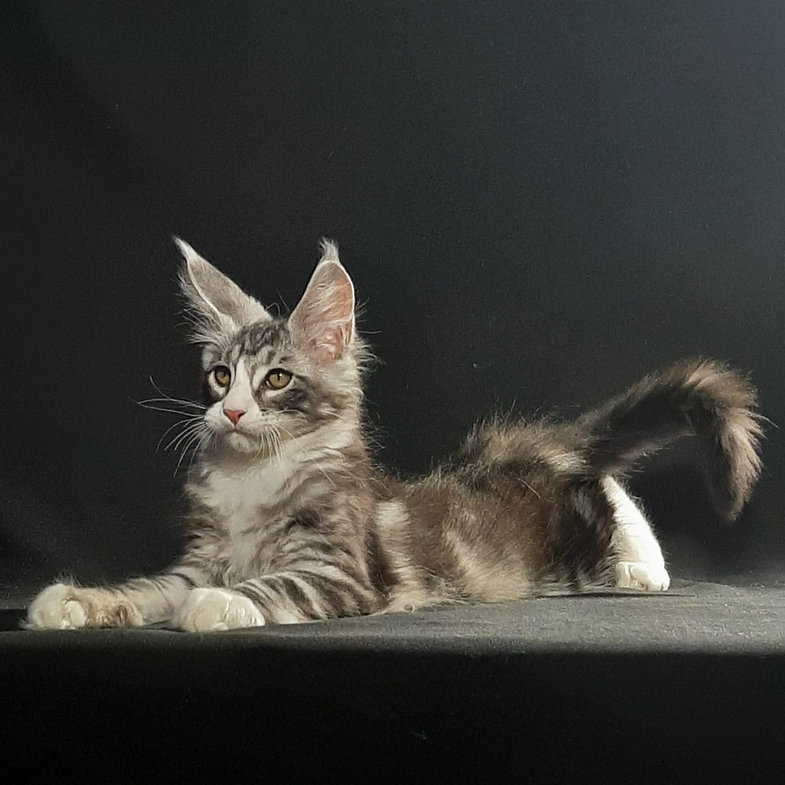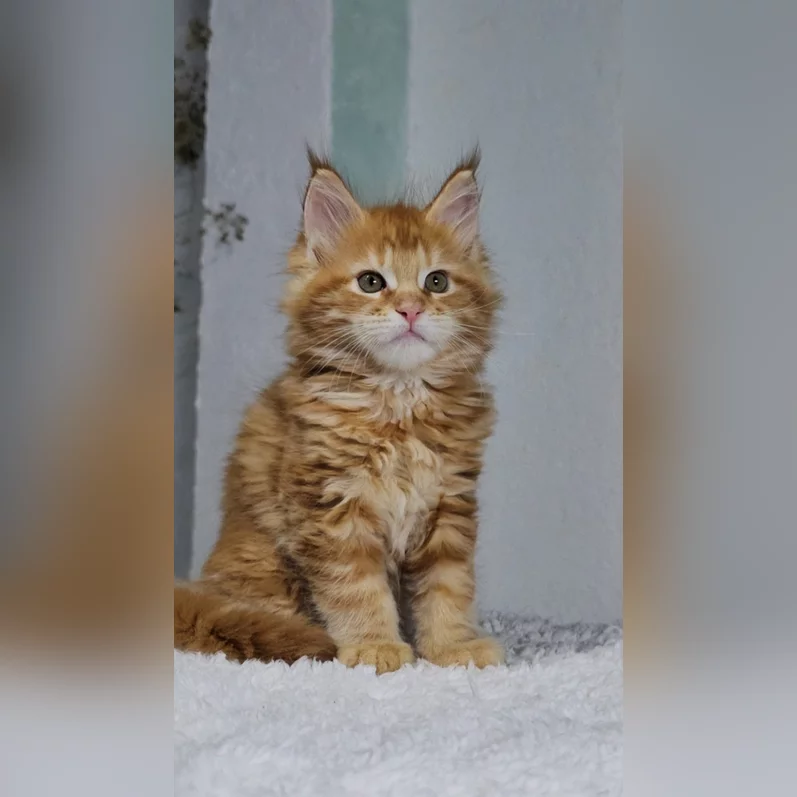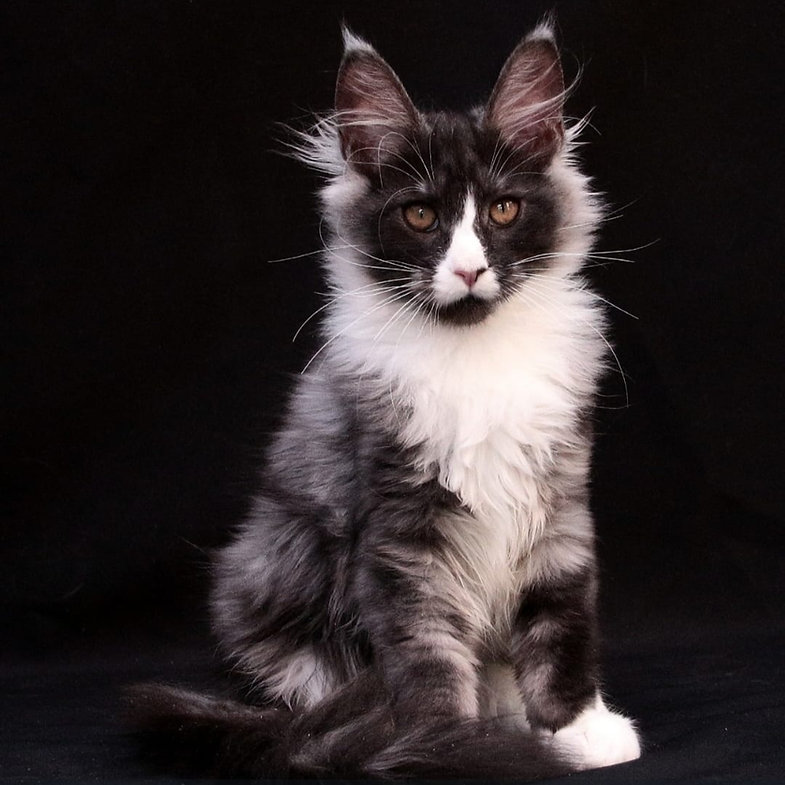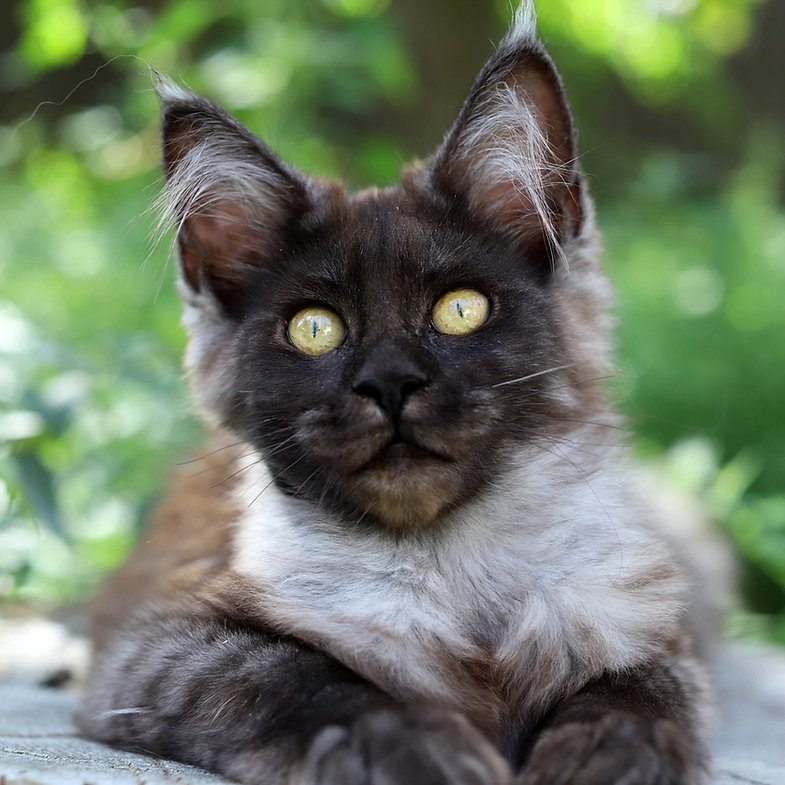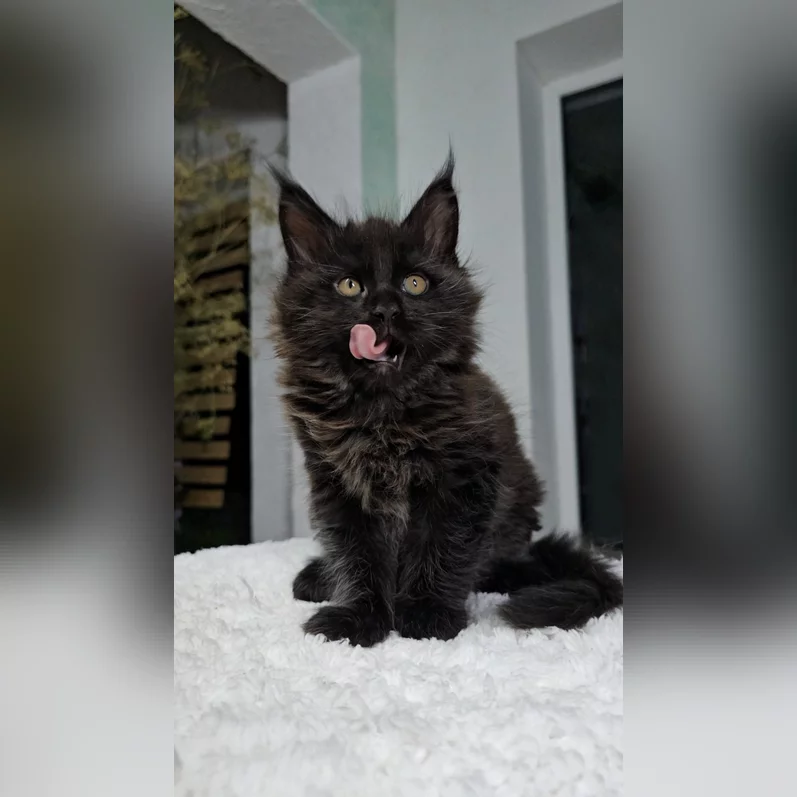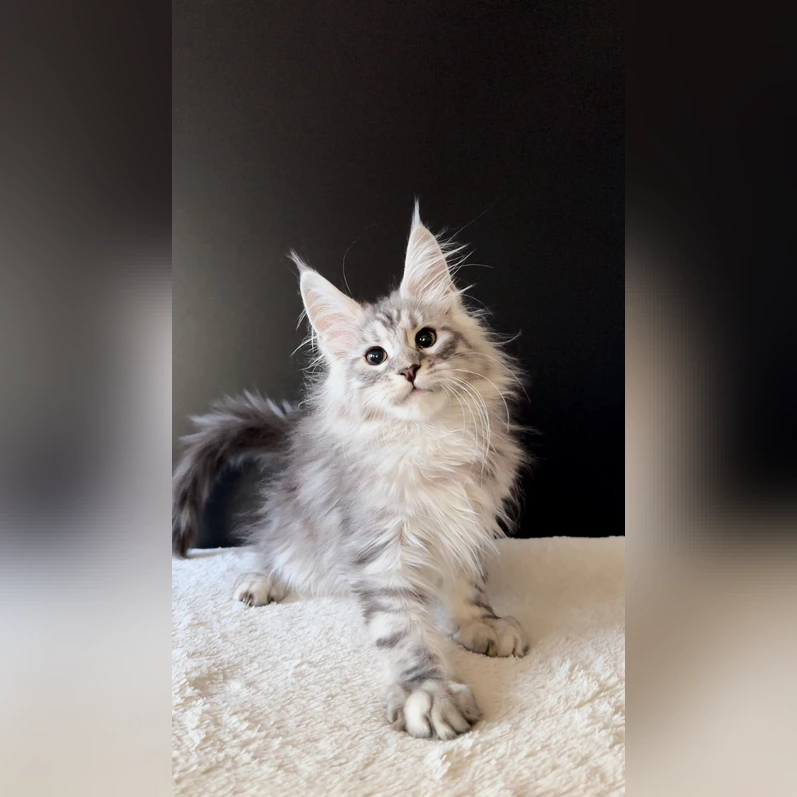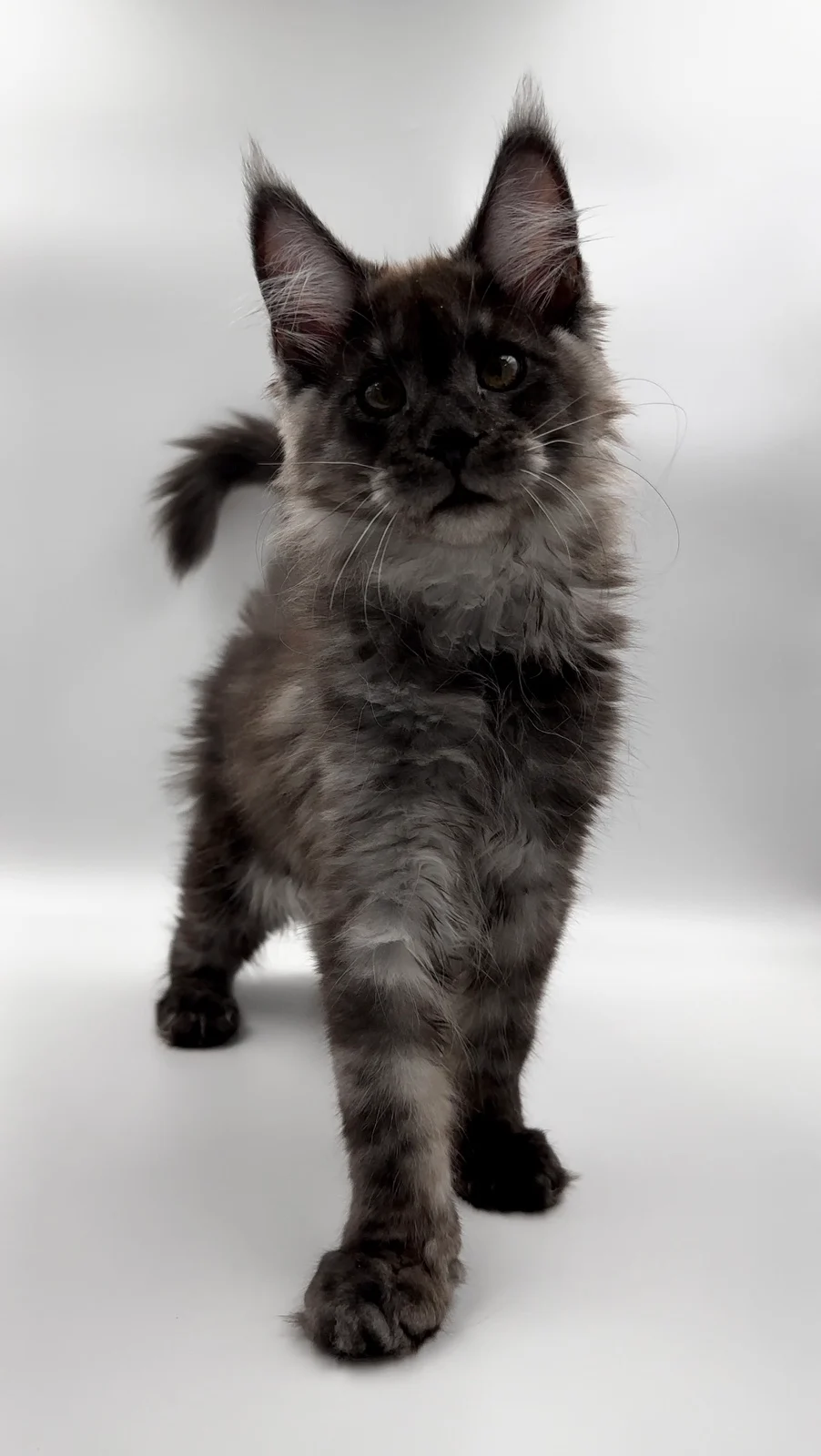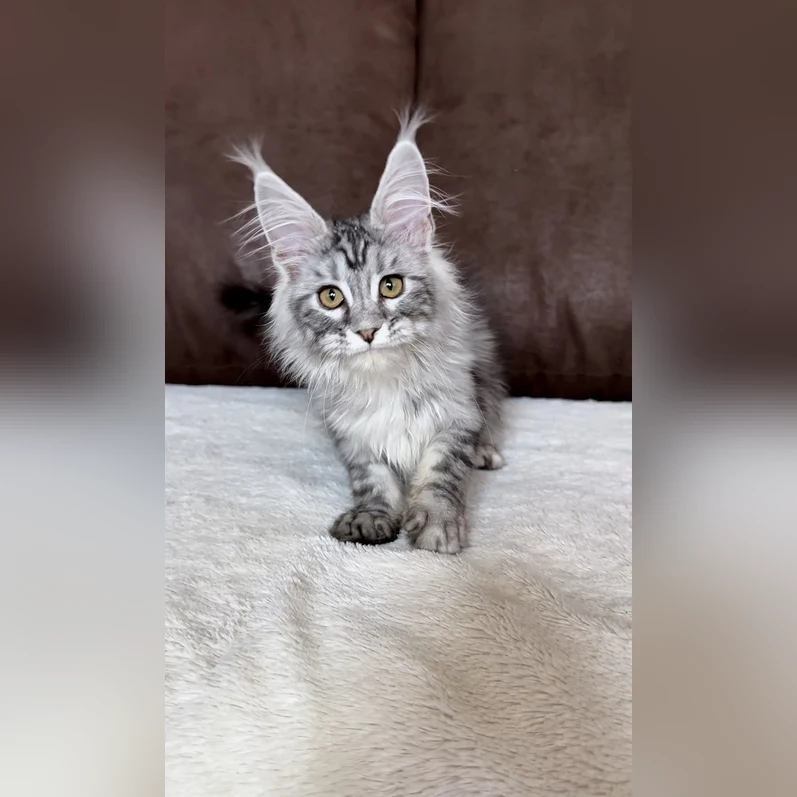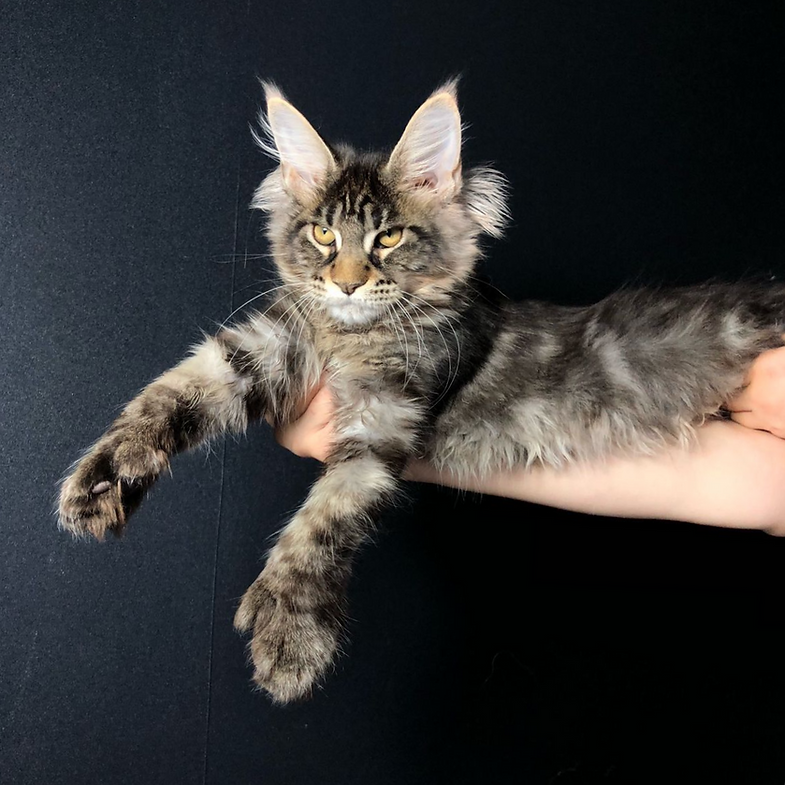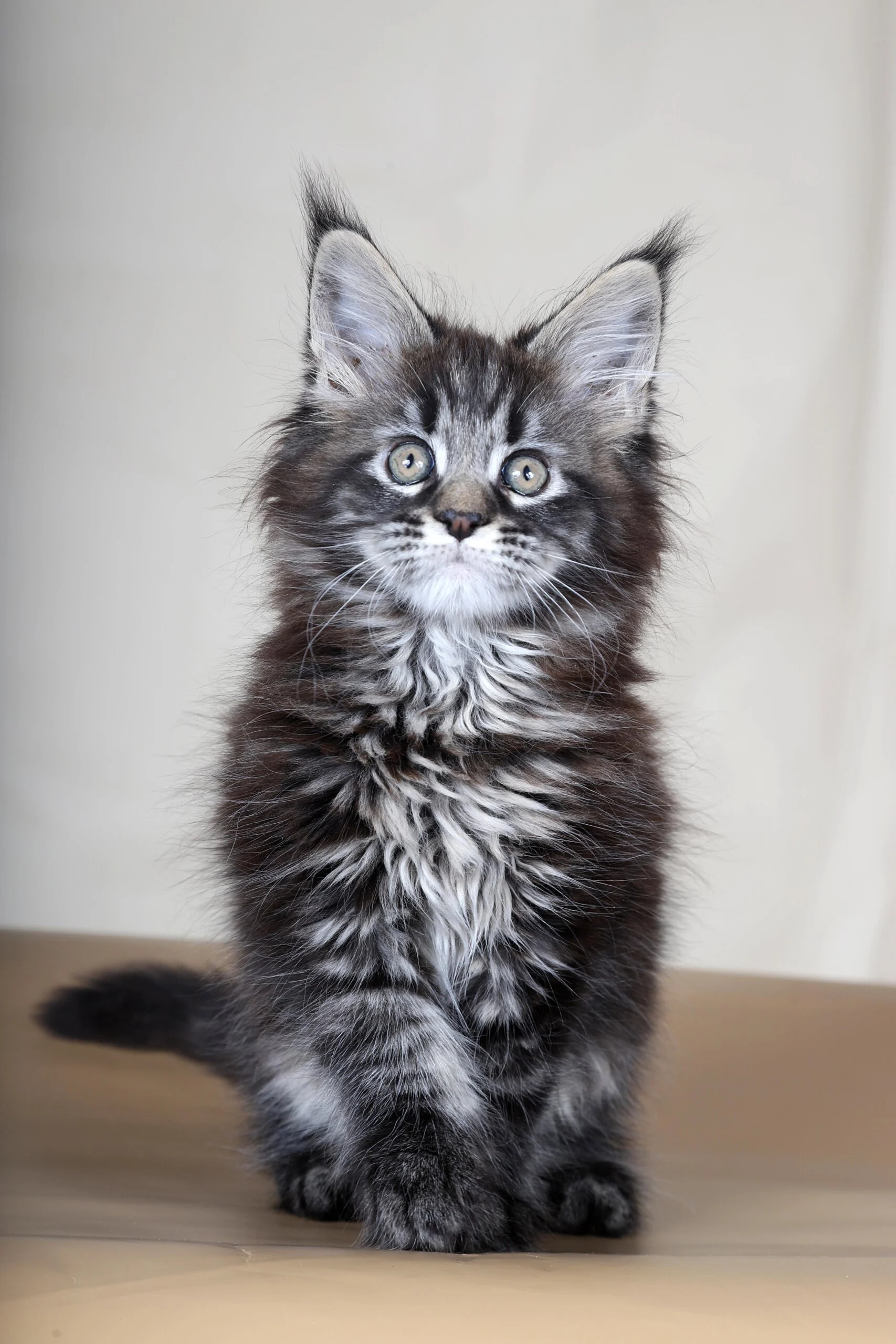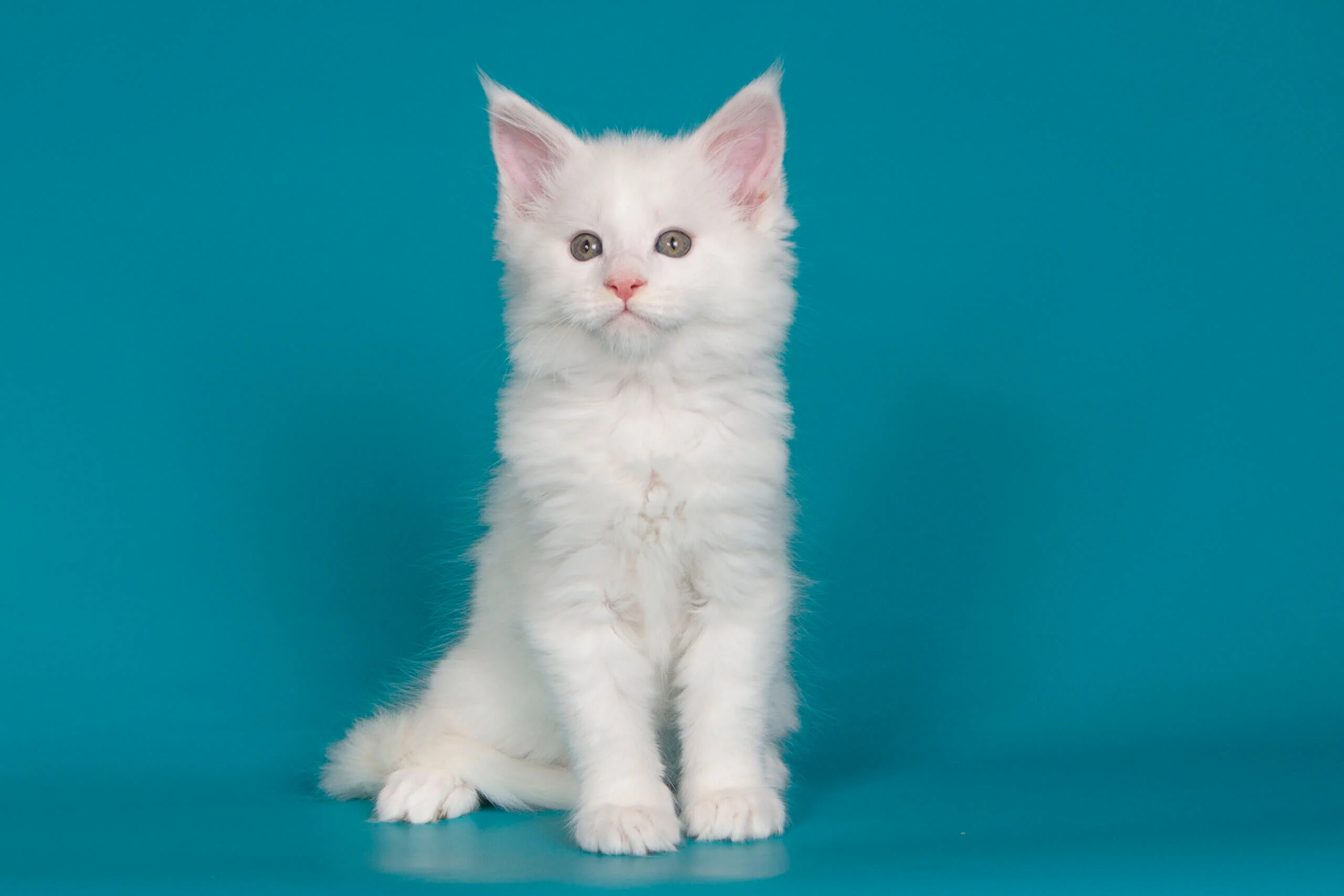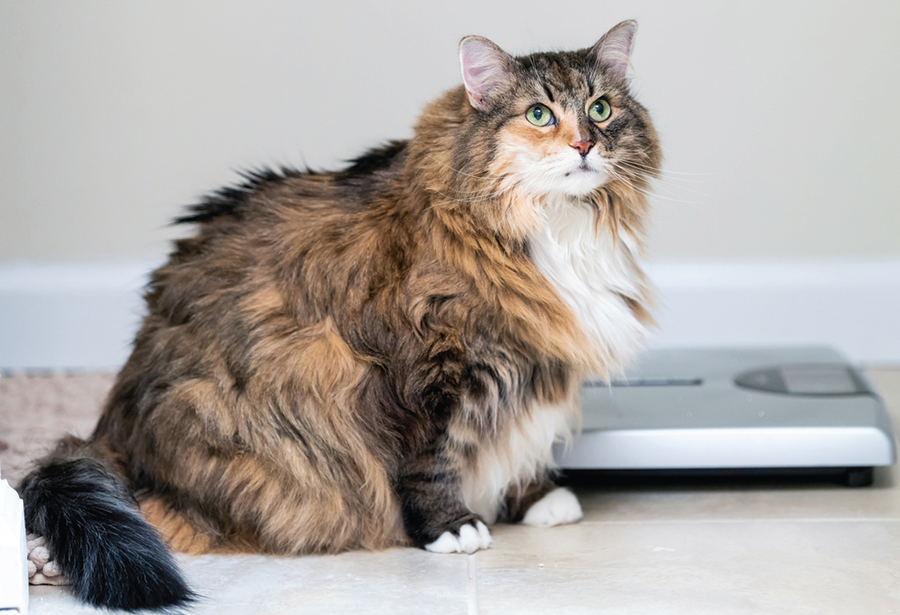
Maine Coon Cats – Indoor Or Outdoor?
Table of Contents
Do The Largest Domestic Cat in The World Like Outdoor or Indoors?
Largest domestic cat in the world are one of the oldest natural breeds in North America, believed to have originated in Maine. They are recognized for their large size, tufted ears, bushy tails, and robust build, and loved for their playful, intelligent personalities.
When deciding whether to keep your gentle giant indoors or allow it outside, you’ll find heated debates among cat owners, EVERYWHERE! Each option has its benefits and drawbacks, so consider carefully before deciding.
It’s worth noting that many breeders, particularly in the US, stipulate in their buying contract that the Largest Domestic Cat in The World must be kept indoors. So, before making a decision, check your contract!!!
What’s my view? Well, don’t crucify me for saying this but I allow my two Maine Coons to roam if the weather is dry. However, we have a few unique circumstances that most households cannot replicate, which help keep my big kitty cats safe.
If I lived in a built-up residential area with lots of people coming and going around us, I’m pretty sure my viewpoint would change! Keep reading to discover what makes our home unique!
Largest Domestic Cat in The World Kittens For Sale
The pros and cons of keeping Largest Domestic Cat in The World indoors are as follows:
| Pros | Cons |
|---|---|
| Safety from Traffic | Potential for Boredom |
| Protection from Predators | Lack of Physical Activity |
| Disease Prevention | Limited Space |
| Reduced Risk of Theft | Dependence on Owners for Engagement |
| Controlled Environment | Suppressed Natural Behaviors |
| Longer Lifespan | Risk of Obesity and Related Health Issues |
The advantages and disadvantages of letting a cat roam outdoors are:
| Pros | Cons |
|---|---|
| Natural Exercise | Exposure to Traffic and Accidents |
| Mental Stimulation | Risk from Predators and Other Animals |
| Opportunity to Explore and Hunt | Disease and Parasite Exposure |
| Reduced Litter Box Use | Risk of Getting Lost or Stolen |
| Cats natural instincts activated! | Higher Likelihood of Injuries and Poisoning |
| Opportunities to climb, run and chase | Negative Environmental Impact |
Safety from traffic
Largest Domestic Cat in The World kept indoors are safe from traffic because they are not exposed to the dangers of roads and vehicles. This significantly reduces the risk of accidents and injuries that can occur from being hit by cars.
Indoor environments provide a controlled and secure space where cats are protected from these potentially fatal hazards.
Protection from predators
If you keep your cat indoors they are safe from predators because they are not exposed to threats from other animals, such as:
- Dogs
- Coyotes
- Larger wildlife
Disease prevention
Indoor cats are less likely to catch diseases, like feline leukemia virus (FeLV) and feline immunodeficiency virus (FIV), than outdoor cats because they are not exposed to the same range of pathogens and parasites found outside.
Indoor environments limit contact with other animals that may carry diseases, reduce exposure to environmental hazards, and minimize risks from parasites such as fleas and ticks.
This controlled setting helps maintain their overall health and reduces the likelihood of infections.
Theft prevention
Maine Coons are a valuable breed and can be a target for theft. Keeping them indoors reduces this risk.
Here’s a breakdown of the latest Maine Coon kitten costs, which quickly highlights why criminals like to steal these large domestic cats – their re-sell price is high!
Controlled environment
A controlled indoor environment has many benefits for cats, including:
- Stable temperatures
- Minimizing exposure to hazards
- Protects cats from aggressive animals
- Ensures a consistent diet
- Helps them avoid poisons and toxins commonly found outdoors
Longer lifespan
Studies have shown that indoor cats tend to live longer due to reduced exposure to risks. For more information about the average lifespan of a Maine Coon cat, read this guide.
I ran a research poll on Maine Coon Central’s YouTube channel. Viewers were asked ‘how long their Largest Domestic Cat in The World lived’. The purpose of the poll was to get up-to-date Maine Coon average lifespan statistics.

As you can see in the screenshot below, out of 127 votes, 29% of owners reported that their Maine Coon lived to 15-16 years of age! A further 26% confirmed their cat lived for 17+ years!
Cons Of Keeping Largest Domestic Cat in The World Indoors
Potential for boredom
Largest Domestic Cat in The World are intelligent and curious cats that require mental stimulation. Indoors does not offer them the variety of sights, sounds, and smells they would encounter outside, leading to boredom and frustration.
Lack of physical activity
Indoor environments can limit a cat’s physical activity, potentially leading to obesity and related health issues. Watch out for these 5 signs a cat is overweight.
Space limitations
Maine Coons are large and active, needing plenty of space to roam and exercise. Indoor environments, especially smaller homes or apartments, can restrict their movement, potentially leading to obesity and related health problems.
Dependence on owners
Owners need to invest time in interactive play and enrichment to keep their indoor cats happy and healthy. We all get tired, and sometimes the last thing you want to do is entertain a cat when you’d rather sleep!
Suppressed natural behaviors
Maine Coons have natural hunting instincts that are hard to satisfy indoors. Being kept inside may prevent them from expressing these behaviors, which can be detrimental to their mental well-being.
Pros Of Letting Cats Outdoors
Natural exercise
Outdoor cats have ample opportunities for physical exercise, which helps maintain a healthy weight and good muscle tone.
My two Largest Domestic Cat in The World love chasing each other around the garden, or chasing a leaf flying in the wind!
Mental stimulation
The outdoor environment provides diverse stimuli, including sights, sounds, and smells, keeping cats mentally engaged.
Whether it’s trees blowing in the wind, birds chirping, or swallows swooping down close over the cat’s head to scare the cats off, our cats love the rural lifestyle and cannot wait to spend time outside.
Opportunity to explore and hunt
Outdoor cats can express their natural hunting instincts, which can be fulfilling and enriching. Bali is currently obsessed with catching and eating moths at dusk!
Reduced Litter Box Use
Outdoor Largest Domestic Cat in The World are less reliant on indoor litter boxes, reducing the need for frequent cleaning. Though, if you have a cat like mine you’ll find they still prefer to poop in the litter box rather than going outside!! haha!

Cons Of Letting largest domestic cat breed in the world Outside
Exposure to traffic and accidents
Outdoor cats risk being hit by cars or encountering other types of accidents.
It is estimated that approximately 10-20% of outdoor cats will experience some form of injury or death due to traffic accidents during their lifetime. This rate can vary based on the density of traffic and the cat’s access to safe outdoor areas.
If you live in a rural setting, however, the chances of encountering traffic is significantly reduced. We are lucky as it takes roughly 3 minutes to walk to the nearest minor road from our home (yes, our driveway is stupidly long!).
We purposefully looked for a house that was a long distance from any road and found a house where we could buy (or secure) more than our cat’s natural roaming distance around our home, helping to keep our cats safe.
Ironically, Mika isn’t the least bit interested in exploring the wider world. Instead, he’s a homeboy and prefers to explore our internal walled courtyard.
Risk from predators and other animals
Outdoor largest domestic cat breed in the world can encounter aggressive dogs, wildlife, or other cats, leading to fights and injuries.
You cannot control who buys the house next to you, but you can research an area BEFORE buying/renting a house to determine if there will be any issues for your cats.
Disease and parasite exposure
Outdoor cats are more likely to contract diseases or parasites, such as fleas, ticks, and worms. Diseases can be fatal to your cat, and it is not possible to know which animals are infected, and which are not.
Therefore, if your cat is attacked, bitten, or gets into a fight whilst alone outdoors, they may encounter an infectious disease.
The best way to reduce the risk of fleas, ticks, and worms is by applying flea treatment to your Maine Coon every month. Here’s a step-by-step guide to get you started.
Getting lost or stolen
Outdoor cats may wander too far from home and get lost or be targeted for theft.
According to Petplan.co.uk cats roam 40-200 meters from their home, which is probably less far than you might first assume.
Injuries and poisoning
Your cat is more likely to ingest toxic substances or get injured by sharp objects or traps if permitted to roam freely.
Environmental impact
Outdoor largest domestic cat breed in the world can hurt local wildlife by hunting birds and small mammals.
Sadly, this is true. In our case, if a bird has hit our full-length windows I always lock the door and prevent the cats from reaching the bird, to allow it time to recover.
Recently though, a bird stunned itself on our kitchen window when I wasn’t in the room. The cats didn’t attack the bird, but seemed to be checking the bird was ok! They were ever so gentle, and 30 minutes later the bird flew away.
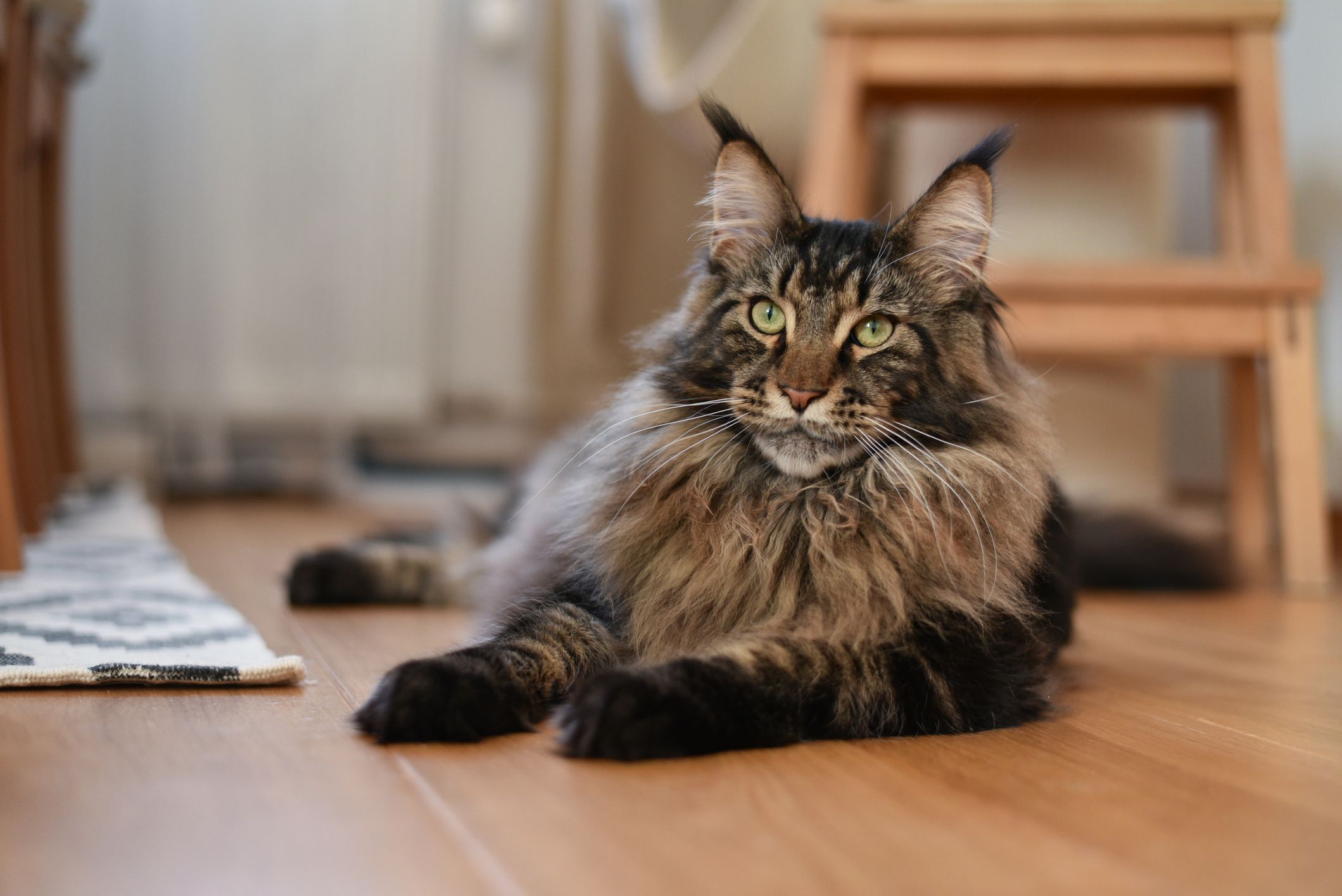
Indoor Alternatives: Enrichment and Exercise
To keep indoor largest domestic cat breed in the world stimulated and happy indoors, implement the following strategies:
- Interactive Toys and Puzzles: These toys keep their minds active and engaged. Here are some great toys that my own Maine Coon cats love!
- Climbing Trees and Scratching Posts: Provide physical activity and satisfy their natural behaviors for climbing and scratching.
- Regular Playtime: Ensures engagement and bonding with the owner.
- Safe, Enclosed Outdoor Spaces (Catios): Allow them to experience the outdoors without the risks.
Safety Tips for Outdoor Largest Domestic Cat Breed in The World
If you choose to let your largest domesticated cat breed in the world outside, consider these safety measures:
- Supervised Outdoor Time: Ensures they are safe while exploring.
- Secure, Fenced-In Yard: Provides a contained outdoor space where they can roam safely and owners don’t need to worry about traffic or predators.
- Harnesses and Leashes: Enables controlled outdoor walks, giving them freedom while maintaining safety. If your Maine Coon wobbles over whilst wearing an escape-proof cat harness, READ THIS.
- Microchipping and ID Tags: Helps if your cat gets lost, increasing the chances of a safe return.
- Vaccinations and Regular Vet Check-Ups: Protects their health by keeping them up to date on vaccinations and regular health checks.
Cat-Proofing Indoors
Cat-proofing for indoor largest domestic cat breed in the world involves making adjustments to your home to ensure it is safe and secure for your feline friend. This process helps prevent accidents, injuries, and exposure to potential hazards.
Here’s a breakdown of what cat-proofing entails:
1. Securing Hazardous Items
- Toxic Plants: Remove or place out of reach any houseplants that are toxic to cats, such as lilies, poinsettias, and philodendrons.
- Chemicals and Cleaning Products: Store cleaning supplies, pesticides, and other chemicals in cabinets with childproof locks to prevent access.
- Medications: Keep all human medications and supplements in secure, closed cabinets.
2. Blocking Dangerous Areas
- Electrical Cords: Use cord protectors or covers to prevent cats from chewing on electrical cords, which can cause shock or damage.
- Small Spaces: Block off access to areas where cats could get stuck or injured, such as behind appliances or inside cupboards.
3. Safe Furniture
- Secure Heavy Objects: Ensure that heavy or breakable items on shelves or tables are secured to prevent them from falling if a cat jumps into them.
4. Protecting Food and Trash
- Secure Trash Cans: Use cans with tight-fitting lids or those designed to be cat-proof to prevent scavenging.
- Store Food Safely: Keep all human food, especially items like chocolate or xylitol, which are toxic to cats, in sealed containers.
5. Enriching the Environment
- Interactive Toys: Provide a variety of toys to keep your cat mentally and physically stimulated, reducing boredom and the likelihood of them engaging in potentially harmful behavior.
- Cat Trees and Scratching Posts: Offer vertical spaces and scratching posts to fulfill natural instincts and keep them away from furniture and curtains.
6. Window and Balcony Safety
- Secure Windows: Install screens or window guards to prevent cats from falling or jumping out.
- Enclosed Balconies: If you have a balcony, consider adding a cat-proof enclosure to allow your cat to enjoy the outdoors safely.
7. Monitoring and Supervision
- Regular Checks: Periodically review your home for new hazards or changes that could pose risks.
- Training and Observation: Monitor your cat’s behavior to address any issues or unsafe activities promptly.
By cat-proofing your home, you create a safe and enriching environment for your indoor largest domestic cat breed in the world, helping to prevent accidents and ensure their well-being.
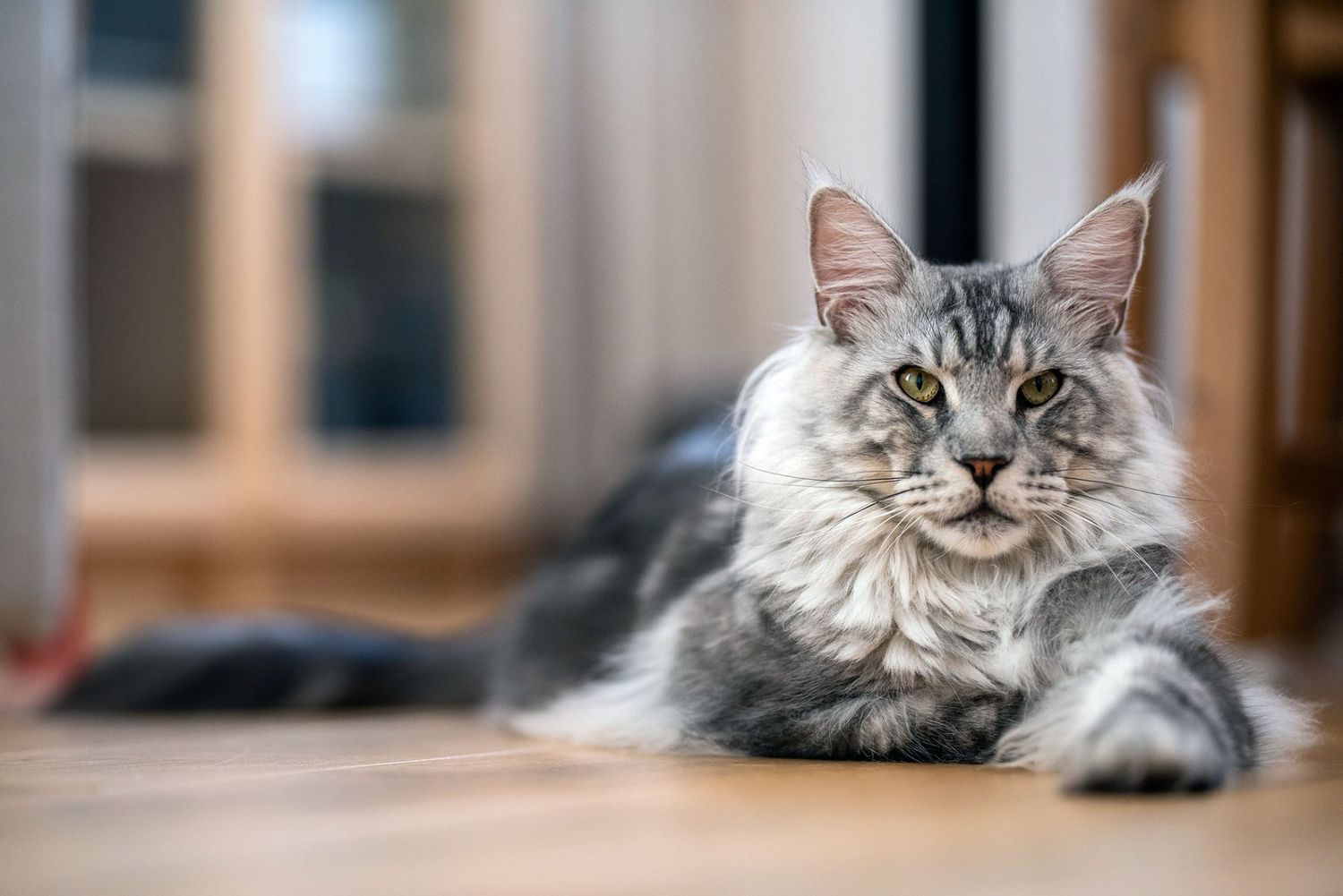
Largest domesticated cat breed in the world Proofing Outside
If you’re determined to allow your largest domesticated cat breed in the world outside, but don’t like the idea of allowing your cat to roam freely, consider cat-proofing your garden.
Cat-proofing your garden involves making the outdoor space safe and secure for your feline friend while allowing them to enjoy nature.
Here’s how to cat-proof your garden:
1. Secure the perimeter
- Fencing: Install tall, secure fences with a height of at least 6 feet. Ensure the fence is solid and does not have gaps that a cat could squeeze through. Adding a deterrent like a coyote roller or angled extensions at the top can prevent climbing or jumping over the fence.
- Barrier Extensions: Use barrier extensions or mesh to cover the top of fences. These extensions should be angled outward to prevent cats from climbing over.
- Underground Barriers: Bury a section of fencing underground or use a buried mesh barrier to prevent cats from digging their way out.
2. Protecting Plants and Wildlife
- Non-Toxic Plants: Choose plants that are safe for cats, avoiding toxic varieties like lilies, philodendrons, and sago palms. Create a designated cat-friendly area with safe plants and herbs.
- Wildlife Protection: Use garden netting or barriers to protect birds and other small wildlife from cats. Installing bird feeders high up or in areas not accessible to cats can help reduce predation.
3. Preventing Access to Dangerous Areas
- Covering Pools and Ponds: Install safety covers or barriers around water features like ponds and swimming pools to prevent accidental drowning.
- Block Access to Sheds and Sheds: Ensure that outdoor storage areas and garden sheds are securely closed to prevent cats from getting trapped or exposed to chemicals and tools.
4. Enriching the Garden Environment
- Catios or Enclosed Play Areas: Consider building a “catio” or enclosed outdoor play area where your cat can safely enjoy the garden environment. This provides stimulation and exercise while keeping them contained.
- Climbing Structures: Add cat-friendly climbing structures, such as cat trees or shelves, to the garden. These provide vertical space and entertainment without allowing your cat to roam freely.
5. Preventing Escapes
- Supervised Outdoor Time: Whenever your cat is outside, supervise them to ensure they don’t wander off or get into trouble.
- Training and Recall: Train your cat to respond to recall commands and use treats or toys to encourage them to stay within safe boundaries. Both our cats come when called as they know they’re going to earn a treat!!
6. Safe Gardening Practices
- Avoid Pesticides and Chemicals: Use natural or cat-safe gardening products. Many common pesticides and herbicides are harmful to cats, so opt for non-toxic alternatives.
- Secure Compost Bins: Ensure compost bins are securely closed, as compost can contain harmful substances or become a breeding ground for parasites.
7. Regular Maintenance and Checks
- Inspect the Garden: Regularly check for and address any potential hazards or escape points, such as loose fencing or new gaps.
- Update Security Measures: As your cat grows and their abilities change, adjust your garden’s security features as needed to keep up with their capabilities.
